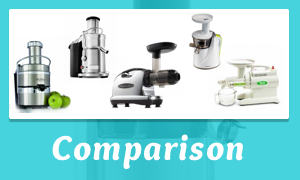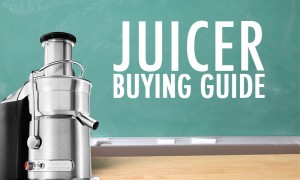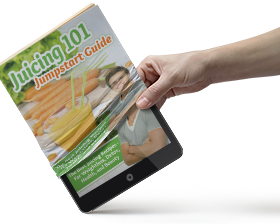Top 30 Juicing Mistakes
and how to avoid them.
There are many pitfalls to avoid when juicing. Now, don’t get me wrong. I will not tell what to do and what not to do, experimentation is one of the bests parts of juicing. Listen to your body. Explore options. The mistakes pointed out in this article may not be applicable to everybody, because everybody is different!
Could be that it’s absolutely no problem for you to gulp down juice in three seconds. But for the majority of people, cranking down juice quickly will cause gastrointestinal distress. So, consider these points as rough guidelines that will work for most people.

Also, there is so much B.S. out there when it comes to juicing and “juicing rules” – Switch on your BS detector when browsing for information – be alert. In my articles I try to be accurate and give scientific proof where possible.
The problem with juicing is there is little research available about the health benefits , disease prevention or even cures to illnesses. There are a couple of unique stories from people who have transformed their bodies with the help of natural juice; but beware nonetheless.
What may work for one person is not guaranteed to work for another. The reports you read, and even my story , are individual cases that vary from person to person.
So keep these precautions in mind when reading transformation stories, articles or other miracle claims from juicing diets or other weight-loss regimens.
With that being said, let’s hop into my list of top juicing mistakes all beginners tend to make.

Let's add an apple to that...

This is probably the most common mistake for rookie juicers: they ram all kinds of vegetables into their juicer and wonder why the end result tastes bad. And then for sweetness they pile on fruits like apples, pears and similarly sweet stuff.
Generally speaking, please avoid consuming too much sugar. The overall goal with juicing should be to revamp your nutrition. The standard diet already contains too many empty calories (one of them being sugar) – you don’t want to add more sugar in form of juice.

Timing is (not) everything

Probably one of the most frequent questions people ask me are: when is the best time to drink my juice? Can I juice in the evening? Can I juice after a workout ? Is really juicing in the morning really the best time?
These are pretty tough questions. Because everyone’s metabolism works differently. For my body, it really doesn’t matter when I juice because I always feel great after a good glass of vegetables.
Technically, the best time to drink juice is in the morning – before breakfast, because the body can absorb all the nutrients without having to digest anything prior. So as a general guideline, try to drink your first juice in the morning on an empty stomach.
If you go to the gym, I would highly recommend to drink juice after a decent workout. Glucose reserves are pretty much empty and need to be refilled after intense sessions at the gym. Even if you add fruits to your juice, chances are the sugar is not going to be converted into fat.

Ignoring the 80/20 Rule of Juicing
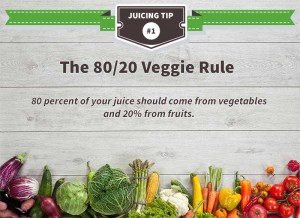
I hope you’ve managed to check out my free e-book . In it, find the 80/20 rule of juicing, which states all juices should consist of at least 80% vegetables and only 20% fruit.
This rule comes full circle with juicing mistake number one. Stick to the 80/20 rule and always juice with one of the five superstars of juicing – and you’ll always be good to go.

Letting Your Juice Sit for Too Long
Juices start to lose their nutrients in a matter of minutes as they come out of the machine, especially if a centrifugal juicer was used. Oxygen and heat are the worst enemies of vitamins and minerals.
You want to avoid letting juice sit for too long after it has been extracted from produce. Try to drink it immediately after juicing (not quickly, just immediately).
If you have a masticating juicer , feel free to store the juice for a longer period of time in the fridge (three days max.), however I personally would even avoid that. The sooner you can drink the juice the better.

Not Cold Pressed

I always recommend getting a masticating juicer, even if they are a little more expensive than standard centrifugal juicers. One of the cheapest ways to get started with a masticating juicer is buying an Omega branded one .
Omega produce quality masticating juicers at relatively low prices. The advantage of a masticating juicer is that it produces little heat, thanks to the low RPM (revolutions per minute).
Centrifugal juicers generally rotate much faster, which results in a higher amount of heat and therefore produce loses nutrients faster. But, it really depends on your budget, if it’s small, start with a centrifugal juicer and later upgrade to a masticating one – to get all the benefits of juicing .

Gulping as Fast as You Can
Okay, let’s look at it this way for a minute: you spend maybe $300 on a juicer, purchase high-quality organic produce, spend maybe 5 to 10 minutes extracting the juice from the fruits and vegetables, another five minutes are spent on cleaning the juicer. Now, why would you drink your juice in three seconds flat? Give yourself some time to enjoy the juice! Really taste and savor it.
Chew it!
The digestion starts in the mouth . So keep your juice there for a couple of seconds and taste all the wonderful fresh, green awesomeness. Yes, juicing takes time. There is no way around it; anybody who says differently is talking crap.
It really helps to create a ritual that you can perform each and every day in the morning, to make a habit of juicing everyday. Once a habit is formed, juicing won’t feel bothersome and you’ll become more efficient.

Not Buying Organic Produce
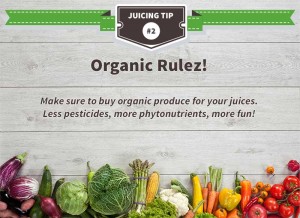
I’m a big
advocate of organic produce
, and that’s because organic produce tastes better and has more nutrients compared to conventional produce.
Also, organic fruits and vegetables contain less pesticides than regular produce.
Yes, organic is more expensive, juicing isn’t very cheap either.
But the benefits of organic produce outweigh the cost by a long shot. Now, if you don’t have the budget for organic produce, juicing conventional fruits and vegetables is OK. However, make sure to wash them very thoroughly. Using conventional food is better than not juicing it all.

Using the Same Ingredients Everyday

I’m preaching that juicing should be fun. Sticking to juicing is really difficult if you don’t enjoy yourself.
That’s why it’s important to try a variety of fruits and vegetables and figuring out what you like and dislike.
The worst thing to do is look at a recipe for – say detox – and juice only that one recipe. You will get bored and will start to hate juicing.
What happens next?
Your juicer collects dust in the attic. Instead, create a weekly plan and a shopping list of your daily juicing needs. Learn how to prepare stuff in advance. Try browsing through my recipes to get some inspiration. Of course, if you’ve figured out a juice that’s particularly awesome, juicing it more often isn’t going to hurt anyone.

Buying a Juicer From Infomercials

Everything sold on Infomercials seem to be the miracle cures for obesity or other kind of problems the world has. Infomercial products are dysfunctional at best, at worst they are harmful to your health and body.
If you see a juicer on television that is just too good to be true, don’t buy it. I buy my juicers from Amazon for a fraction of the cost.

Darling, Can You Clean the Juicer?
I know you are lazy, I am too. And that’s okay. Especially when cleaning a juicer takes five tell myself; well, I’ll do it later.
Juicers get really sticky because of the sugar that is inside fruits, also, some vegetables like broccoli do leave a very nasty sticky pulp inside the blades and containers – which should be removed immediately.
So, after finishing with juicing, wash your juicer with warm water and once a week soak the spinning blades of your centrifugal juicer in water and a little bit of white vinegar to get the blades thoroughly cleaned. Avoid using the dishwasher – your machine will thank you with a long life.

Rotate it!

When juicing leafy greens and vegetables (for example kale, spinach or celery) it’s important to rotate the produce put into the juicer so that it doesn’t get clogged.
You could put in a leaf of kale, a piece of cucumber, then another leaf of kale and finally some pineapple. Or simply wrap the kale around a piece of cucumber or an apple.
That way, you’re alternating between leafy produce and food which has more liquid, which helps to flush the centrifuge or the augers of a juicer. You’ll notice that the efficiency of your juicer will increase. More juice keeps Mowgli happy .

You Haven't Tried Ginger, Garlic and Jalapeños

What! You want me to juice garlic? And jalapeños? Yes I do! And I also want you to try ginger.
There is no juice I make without a knob of ginger in it. Ginger adds a nice zing to juices, makes them much more exciting and tasteful.
I know, there some people who consider ginger too spicy, so use with care. When using garlic, try to use fresh cloves and not the dried ones. Jalapeños is only something for the real hardcore crowd . But it is worth a try if you like spicy food.

Not Everything Needs to Be Peeled

I know people who will peel anything and everything they put into juicers. From apples, kiwi to carrots– because they think that it is actually harmful to consume the juice that comes out of a peel.
If you don’t buying organic, then there might be a high level of pesticides on produce’s peel.
But when buying organic , then it’s no problem to juice produce with the peel on. Most nutrients are either directly in the peel or just underneath it. Remove that and you’re basically throwing away all the good stuff!
Now, there are fruits like pineapple (where the peel is just to hard), or lemons or limes (it tastes too bitter).
You can remove the peel from these fruits safely. But why remove it from beets or carrots? There’s just no reason. Also, keeping the peel intact will save a lot of time, which can be used for cleaning instead.

Thinking Juicing is a Miracle Cure
Don’t get me wrong. I absolutely love that you want to try juicing. But juicing is not going to be the miracle cure you might be hoping for. It will not make you lose 50 pounds in two weeks, it will not cure you from cancer or other diseases.
What juicing will do, however, is make you more aware of the food you’re consuming and help you stick to a diet or workout regimen better and for longer periods of time.
Besides that, juicing can help you get the necessary veggies if you’re having a hard time including them in your meals. Just don’t expect juice to be the answer to all your health problems.

Thinking Juice is a Replacement for Solid Food
People who start juicing might get overeager only consuming their juices during the day. However, juicing cannot be a replacement for solid food for longer periods of time.
It is okay to go on a juice cleanse for a couple of days. But if you rely on juices for too long you put your body into starvation mode and you will not lose any fat.
So I recommend juicing to be a supplement to regular food that you prepare at home.
This is important.
You need to prepare your meals yourself with fresh produce to have control over what you eat.
Diet success depends on 80% or more on what you eat – the rest is exercise.
Stay away from processed foods is much as you can and start enjoying your own meals.

Buying too much produce

People tend to buy too much produce during their first weeks of juicing, because they don’t know exactly how much is needed for a day.
My recommendation is start out small, just buy a couple of veggies and some fruits – may be one cucumber, one kale, one broccoli and a couple apples. Then try to make your first juice and see how far it can go.

Confusing Juices With Smoothies

So, what are smoothies and what are juices? Many people confuse the two thinking that both are the same. But of course, that’s not the case. When making a juice, you’re basically remove all the fiber from the produce and extracting the liquid from your fruits and vegetables.
Only a little bit of juice pulp will remain. With a smoothie, the vegetables and fruits in a blender will basically leave the fiber intact—but mushed into a thick liquid, which can also serve as a meal replacement (but it cannot be drunk as quickly as juice).
A great way to make combined juice smoothies is by using kale, carrots and apples and then add a banana or avocado into a blender with your pre-made juice – and blending it all together.

Comparing Bottled Juice To Fresh

People who don’t know the qualities of fresh juice always tell me: oh, I can go to the supermarket and just buy bottled juice.
Juices at the supermarket are practically dead. The only thing they’ve got is sugar. Most of the time they have been heated heavily in order to kill bacteria.
Which of course not only kills the bacteria, but also vitamins and minerals. Nothing beats fresh juice, and I mean c’mon, who wants to drink juice with a shelf life of three months?
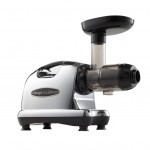
Omega J8006 Juicer
Average user ratingThe Omega J8006 is a real masticating juicer powerhouse.
Juicer Review| Juice yield | Medium |
| Cleaning | Easy, < 5 min. |
| Best for | Leafy Greens, Vegetables, Fruits, Wheatgrass, Nuts, Berries, |

Cleaning Teeth Straight After Drinking Juice
Juicing natural fruits will give way to natural citric acid. Citric acid basically is the worst enemy for teeth and facilitates cavities alongside bacteria.
According to MayoClinic , consuming anything acidic should be followed by a 30-minutes abstinence from brushing your teeth. According to the American Dental Association, acid erosion can cause permanent damage to teeth . So after juicing, especially when it contains fruits – do not brush your teeth immediately.

Mixing Too Many Fruits and Vegetables – A Recipe for Disaster
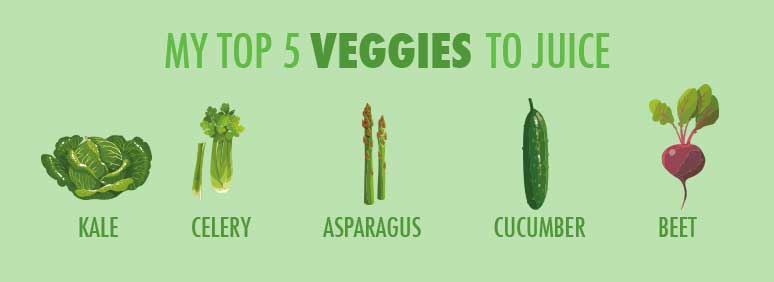
The best juices I make are plain and simple , containing not more than two or three ingredients. While I encourage you to experiment with as many fruits and vegetables as possible, to see what you like and dislike, it’s best to limit the ingredients to about five pieces of fruits and vegetables.
Many times people include 10 or more different ingredients in their juices and wonder why it tastes like pure garbage. Try starting with only two ingredients and then carefully add more to the mix. That way, you’ll enjoy it and have fun while juicing.

Not Having a Plan for Your Diet

If you fail to plan, you plan to fail. It goes without saying this idiom is also true for juicing. You can make the best juice in the world – but without having a plan on how to sustain a healthy diet, juicing will not bring any benefits.
You might find short term success, but any diet should be oriented towards a long-term goal which is eating healthy and exercising . After a juice fast, you need to have a plan on how to proceed with your diet.
Start an exercise regimen, prepare healthy meals in advance and do not buy processed foods. All those guidelines have to be taken into consideration in order to reap the benefits of a juice based diet.

Not Drinking Enough Water

The beauty of juicing is that many fruits and vegetables already contain more than 50 or 60% water, so generally your hydration levels will be all right if you juice regularly. However, I want to stress the importance of drinking plain water during the day.
Hydration is one of the most common problems people are struggling with. People feel hungry, when instead they are thirsty. Drinking 2 or 3 liters of water per-day ensures enough hydration for the body. People who exercise regularly need to drink more water than people who don’t.

Starving the body
You only want to consume green juices all day long. That way, you can shred all the fat away! However, if the body doesn’t consume enough calories per day it will switch to starvation mode. Once in it, it will be almost impossible to lose fat because the body is very efficient at retaining energy.
First, it will eat up all the protein in the muscles and only then it will go to the fat reservoirs in your body; but this can take a long time. Make sure to give your body enough food (healthy food!), Because that’s what it needs to burn fat efficiently.

Starting With Too Much Dark Green Veggies
You might have heard that juicing vegetables and greens in general is very good. And that’s true! Provided the 80/20 ratio is maintained whenever possible. However, please start slow on greens that are really strong, such as kale or cabbage.
When creating your first green juice, try starting with cucumber, celery and just one leaf of kale. Then, after a couple of weeks, add more darker greens carefully to see how your body reacts. If it can sustain a higher level of greens, go add some more. Your body will get used to the flush of nutrients soon enough.

Not Eating Any Fats
People think that fat makes them fat . But that is not necessarily true. Eating bad fats combined with a lot of carbohydrates is what makes them fat. In fact, eating good fats such as OMEGA-3 can actually aid with weight-loss. Your body needs enough good fats in order to activate its metabolism.
Juicing alone won’t give you all the necessary fat the body needs. That’s why you should consider supplementing with omega-3 or blend some nuts and seeds into juices. Some juicers can make almond milk which is definitely good for your body.
Good Juicer for almond milk

Omega VRT330
Average user ratingThe least best juicer from Omega, say hit to the Omega VRT330.
Juicer Review| Juice yield | Medium |
| Cleaning | Medium, 5 - 10 min. |
| Best for | Leafy Greens, Vegetables, Fruits, |

Lacking Protein
While vegetables do contain protein, a lot of importance nutrients get stripped away because juicers remove the fiber from produce. Which it makes it hard to consume enough protein if you strictly drink juices during a juice fast. I supplement regularly with protein powder or other sources of healthy protein in order to make up for the loss. Living longer than one week without protein is a course of action I wouldn’t recommend.

Going on a Juice Diet Without Prep
If you’re considerably overweight, do not go on a juice diet immediately, because doing so will put the body in shock and fail to bring the benefits of juicing . When your body shuts down due to a dramatic decrease in calories, a juice diet will have detrimental effects to your health and weight loss goals.
Instead of an immediate juice diet, try reducing your calorie intake step-by-step while working on an overall diet plan and your nutritional intake. After getting used to less calories, you can consider a juice only diet for a couple of days and see how it goes.

Quit Juicing Before Even Starting
Many people that want to start juicing get overwhelmed quickly, because there are so many variables to into account. Which is the best juicer to pick? How much money to spend? Masticating or centrifugal? What kind of fruits and vegetables to juice? How much time does it take to juice? And more.
That’s why people get stuck and don’t start juicing all. Which is why I have prepared extensive guides for beginning juicers to get started. If you need any further assistance feel free to contact me via email or Facebook . I’m sure I can help.

Giving Up After Mistakes
You will make mistakes when juicing. Maybe you bought the wrong juicer and figured out after three weeks of juicing that you want to juice more wheatgrass instead of cucumber. Or you are making terrible tasting juices in the first week and are struggling with getting the right amounts of vegetables and fruits. Fear not! Mistakes are all right, learn from them and improve upon them. Mistakes shouldn’t discourage one from continuing a journey towards better health.
If after a couple of weeks you think juicing is not for you, don’t worry – just leave it. But do me a favor: try it for at least 30 days and see if you can’t iron out some of the inevitable mistakes we all make at the beginning.
Once juicing becomes a habit, things are getting easier and many actually start enjoying the process.

Every heard of the Dirty Dozen? You're probably juicing too much of it.

Each year the Environmental Working Group presents a list fruits and vegetables that were exposed to high level of pesticides. Their ranking contains the Dirty Dozen (Plus) which is the group of fruits and vegetables with the most pesticides found on them. Then there is the Clean Fifteen which are the foods with very little levels of pesticides.
Many of the good foods are heavily treated with pesticides if bought conventionally. That’s why I always recommend you buy organic produce. It is more expensive but in general doesn’t have any pesticide residue on it. If you must buy conventional produce here is the list of the Clean Fifteen and the Dirty Dozen Plus:
- Clean Fifteen
- Updated 2014
- Avocados
- Sweet corn
- Pineapples
- Cabbage
- Sweet peas, frozen
- Onions
- Asparagus
- Mangoes
- Papayas
- Kiwis
- Eggplant
- Grapefruit
- Cantaloupe
- Cauliflower
- Sweet potatoes
- Dirty Dozen Plus
- Updated: 2014
- Apples
- Strawberries
- Grapes
- Celery
- Peaches
- Spinach
- Sweet bell peppers
- Nectarines, imported
- Cucumbers
- Cherry tomatoes
- Snap peas, imported
- Potatoes
- Kale & collard greens
- Hot peppers
Your Turn!
Now, we have covered a lot of the critical juicing mistakes that people tend to make when they first start their juicing journey. There will be hiccups and trouble; juicing is not the miracle cure you might have read in some blog or a YouTube video. But it will help you maintain a consistent and healthy diet. Eating healthy is the key to weight loss and reducing the risk to all kinds of diseases; combined with enough exercise – you’re good to go for life!
Know of any other juicing mistakes you’ve made in the past you’d like to share, please connect on Facebook and leave a comment!

